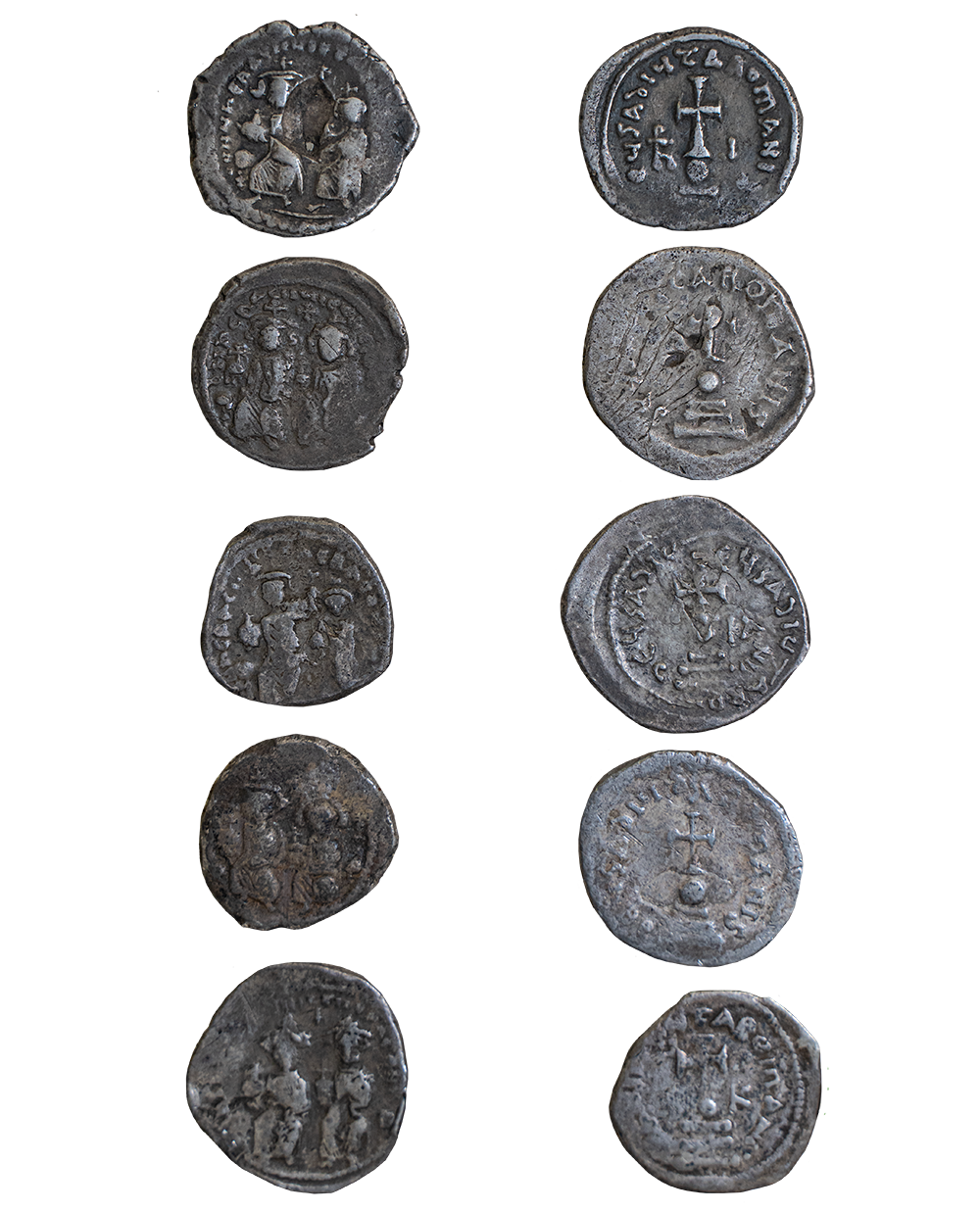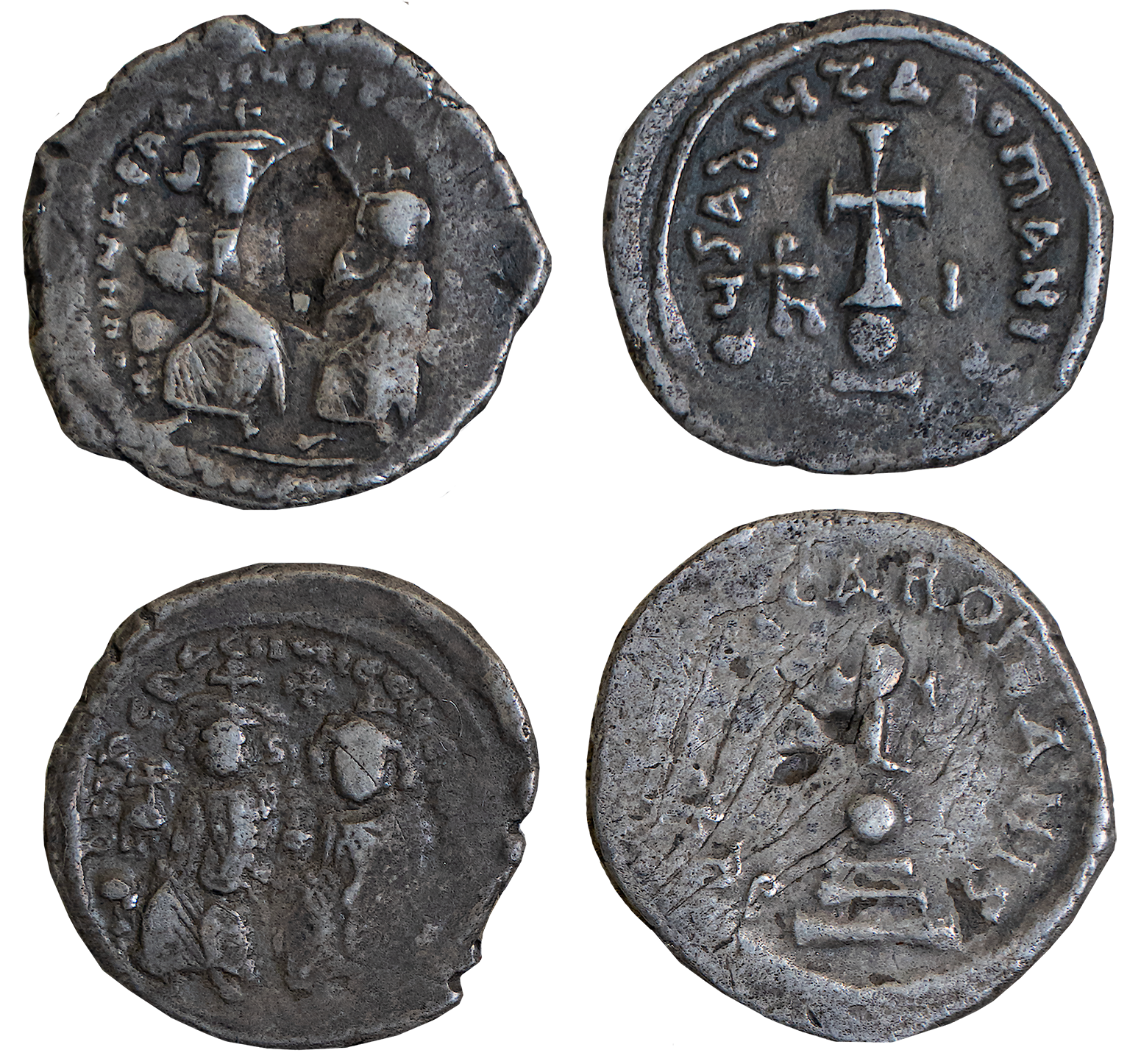Hexagrams (coins) of the Emperor Heraclius (610–641)


In 1950, a treasure of Oriental silverware was accidentally discovered in the Kama region. In a silver dish were found 272 coins. The dish of possibly Iranian origin (during the reign of the Sasanid dynasty of the III–VII Centuries) or from one of major craft centers of Central Asia (Sogdia) that were under Iranian influence. On the obverse of the coins are depicted Heraclius and Heraclius Constantine sitting on a throne. They are dressed in cloaks, which are fastened on the right shoulder with a fibula. They have crowns with crosses on their heads; between their heads is a cross. On the reverse side is a cross on the Orb, standing on Golgotha, consisting of three steps.
More information...These coins were put into circulation by the Emperor Heraclius because of the difficult foreign policy situation when Byzantium had to pay of tribute to the Avars. The coinage of hexagrams (double miliaris), which were new silver coins of larger denominations (their weight is about 6gr), was supposed to support circulation of Byzantine golden coins and provide international market with the sufficient amount of money. New coins quickly became widespread and played a huge role in monetary circulation.
Functional purpose: large silver coins put into circulation to ensure foreign trade of Byzantium.
Notice of uniqueness: coins of the Bartym treasure are major, but not the only, hexagrams found on the territory of the Kama region, the Ural and the Volga region.

